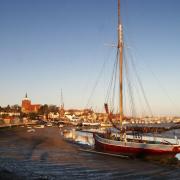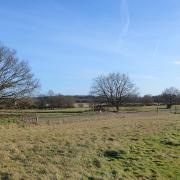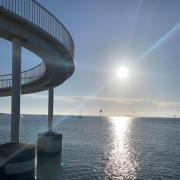Dive into our magical marine world and find out how Essex Wildlife Trust is protecting it
Our wonderful coastline boasts everything from intertidal saltmarshes and mudflats to shellfish reefs and rock pools that get revealed as the tides pull back into the vast ocean; these varied habitats stretch for miles along the Essex coast.
Relying on these habitats are hundreds of species of marine life, with creatures swimming within the waters, birds nesting on Essex’s beaches and insects flittering through saltmarsh, reed beds and wetlands. There is much excitement about the creatures of the deep sea, but what do we know about the creatures of the shallows?

Orange seals
Although common seals enjoy swimming and splashing around in the sea looking for food, you’ll also find them lounging and lazing upon the sheltered shores and estuaries of the Essex coast. Look closely at Essex’s seals and you might witness an unusual phenomenon – they are actually orange! But it isn’t all the sunbathing that is causing these big mammals to gain an orange hue. Sliding around on the muddy banks of saltmarsh and estuaries changes their fur from grey/brown to this bright colour because the salty mud contains iron oxide (just like rust) and this rubs off on the seals. It is completely harmless, but adds to their cuteness!

Native oysters
The native oyster, also known as the flat oyster, has been recorded in Mersea since Roman times. This historic Essex staple is always hard at work. Each oyster filters an average of 200 litres of water a day. But how do they do it? As a filter feeder, these little shellfish species help remove excess nitrogen from waters by absorbing it into their shells and tissue.
Previously, native oysters have been in decline due to overfishing, but this is changing. So far, the Trust has helped the Essex Native Oyster Restoration Initiative (ENORI) to designate 284km2 areas within the Essex coastline as a Marine Conservation Zone, to recover native oysters and native oyster beds.

Sea hares
A little sea hare doesn’t hop but flops around the shallows. What appears to be bunny-like ears is actually a pair of sensory tentacles that help it to taste and smell. Often, it is easy to mistake a sea hare for a sea slug because of their shapeless, globule body. However, they are sea snails that possess an internal shell. Out of the water, their shape softens and they appear just like seaweed. The saying ‘you are what you eat’ is true for these slimy creepers. It is thought that their colour is determined by their diet. Whether they’ve been munching on brown seaweed or green, we can always tell.

European flounder
If you peer into the waters of an Essex estuary, what do you imagine lies beneath? One creature that ripples along the muddy bottom of our shallow water is the European flounder. The flounder is fantastically adapted for life in the ‘flat’ lane. With the ability to camouflage, its mottled red and brown splodges can adapt to hide itself from looming predators. Flounders’ eyes are exceptional – not only do they move independently from each other, but they can move entirely! When born, flounders appear to be more rounded and fish-like, with an eye on each side. As they grow, they spend more time flat on their side. This causes the underside eye to move across to the other side, a very clever adaptation! The Trust is working to support fish like flounder that move from seas to rivers through the development of the Essex Fish Migration Roadmap – unblocking hundreds of passages across Essex’s river network to ensure fish can travel freely.

Sea horse
A very rare but beautiful sight, the short-snouted seahorse has been found enjoying the shallows of the Thames estuary. With no teeth, they can sway in the waters while they suck up their favourite foods like shrimp and plankton. Their tails are useful to curl and cling around seagrass, as they aren’t strong swimmers. Around our coastline, we have seagrass meadows that are as rich in life as the meadow in your nearest nature reserve. But these areas are under threat. The Trust is currently part of a three-year project, with the aim to protect and restore the seagrass that grows in these shallow waters. You can help protect this seahorse habitat by avoiding seagrass areas when paddling and swimming.
To find out more about how Essex Wildlife Trust is protecting our oceans and the species that live within them, visit essexwt.org.uk/what-we-do/protecting-wildlife/projects
You might like best places on the Essex coast: https://www.greatbritishlife.co.uk/travel/places-to-visit/best-places-on-essex-coast-9224830





























